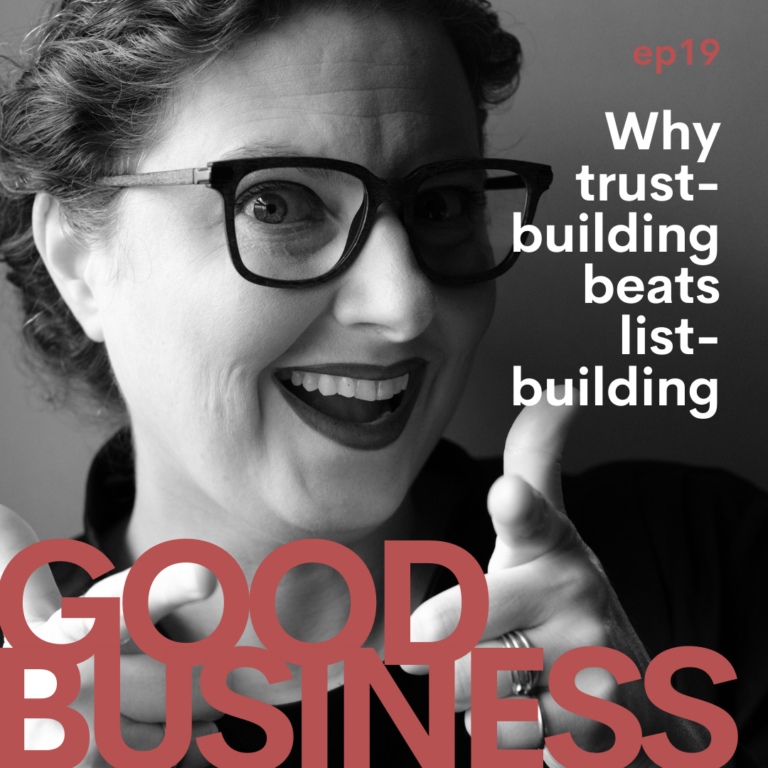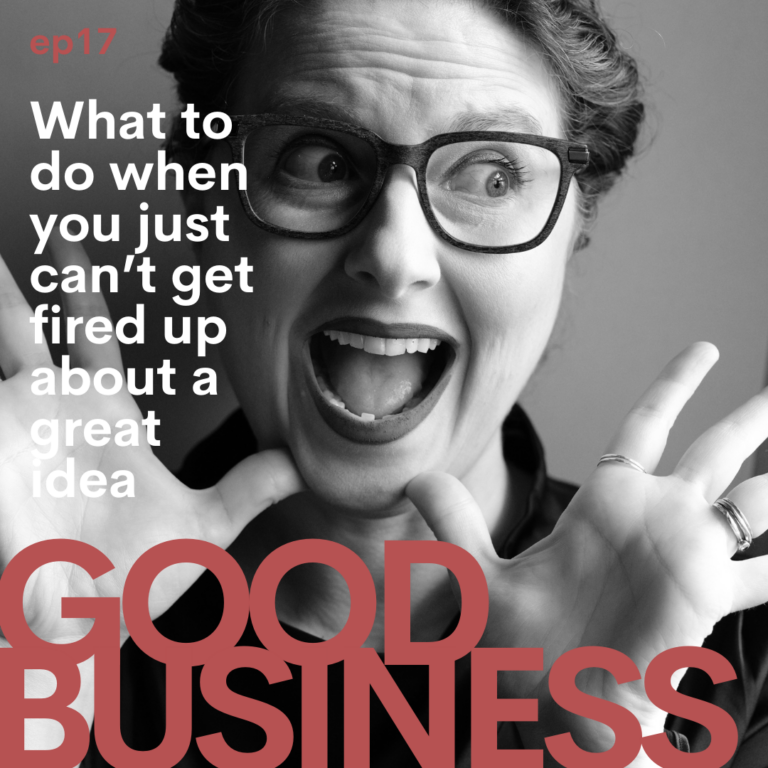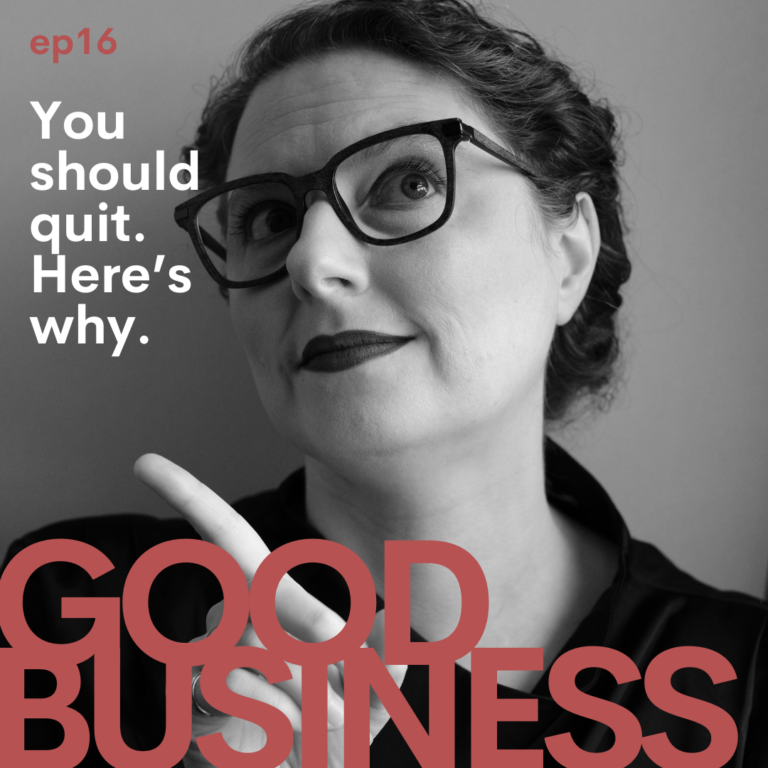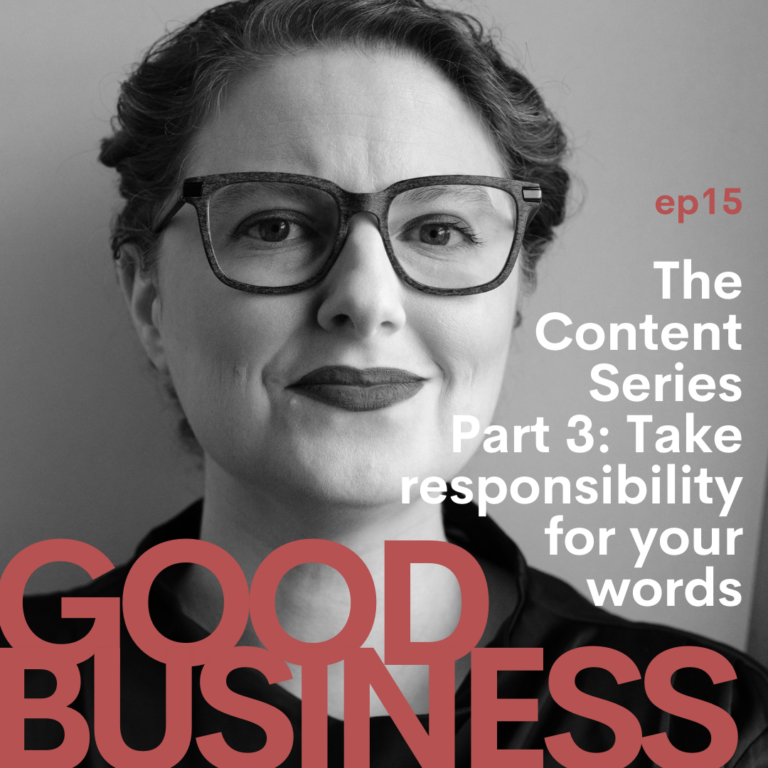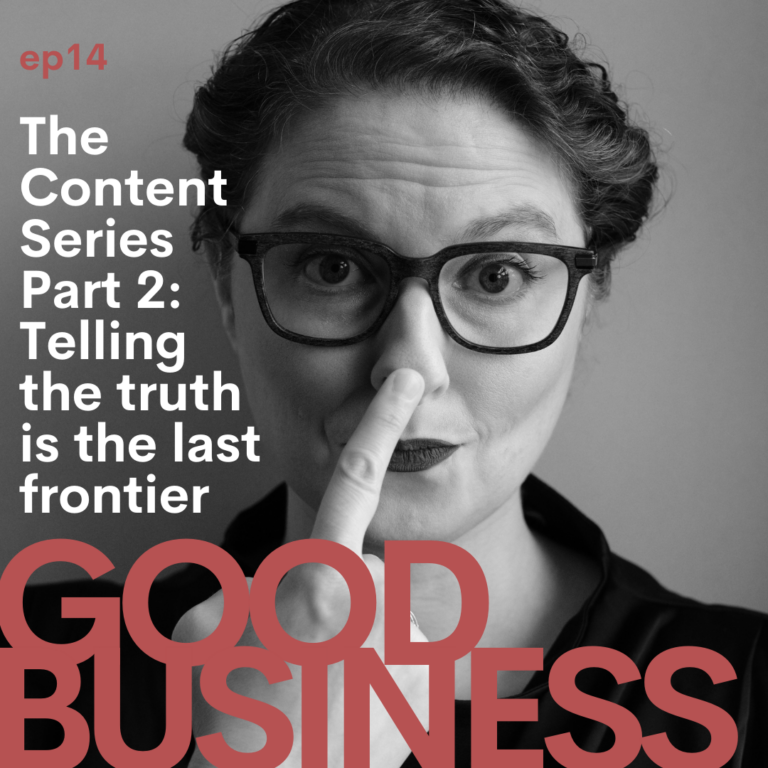Welcome back to the Good Business Podcast. I’m your host, Illana Burk. Today, we’re diving into one of my favorite productivity tools, which, amusingly enough, isn’t really a productivity tool at all. As a business coach, I often get questions about productivity—it’s part of the job. Clients constantly ask:
– How do I get more done?
– How do I tackle this project?
– How do I get from point A to point B?
This leads us to one of the most effective methods I use, primarily because most traditional productivity advice doesn’t work for everyone. It’s usually contingent on two things: willpower and a willingness to submit to discipline over impulsive creativity. But for many of us, that impulsive creativity feels more vital than simply checking off tasks. If you’re in this camp, you’re going to love this method because it supports both getting things done and indulging in those spur-of-the-moment creative bursts.
Today, we’re diving into one of my very favorite models that I find works exceptionally well for those of us who can only do things when we’re excited about them. Unsurprisingly, it’s not actually a productivity model but a strategic one. The concept is called backcasting—think forecasting, but in reverse. Instead of trying to predict the future and prepare for it, you start with a clear vision of your goal and work backwards through all the steps to figure out how to get there. Essentially, you walk backwards so you can walk forwards.
What is Backcasting?
Backcasting is a strategic planning method that begins with defining a future outcome you want and then determining the steps needed to achieve that future, working backward to the present. It’s a proactive approach that focuses on possibilities rather than limitations.
The Origin:
The concept was first introduced by John B. Robinson in the 1970s, a researcher and professor specializing in sustainable development and environmental policy. I came across it while earning my MBA in sustainable enterprise, a field where it’s heavily used to address big problems like climate change. This approach works exceptionally well for creating other types of sustainability, such as in a small business context.
Why Backcasting Over Forecasting?
Traditional forecasting often limits us by tethering our future to our current condition. It projects future outcomes based on past experiences and trends, which can be outdated. Backcasting, however, allows for more expansive and innovative thinking by letting you envision an ideal future without being constrained by current circumstances.
How to Do Backcasting
So, how do you actually do this? Let’s break it down into three steps:
1. Define Your End Goal:
Start by getting crystal clear on what exactly you want to achieve. This could be anything from thriving in a new endeavor to scaling a business. Be as specific as possible, even if it’s not quantifiable. For example, you could aim to “have more influence over more people” rather than a specific number.
2. Work Backwards:
Once you’ve nailed down your end goal, map out the steps needed to get there, starting from the end and working back to the present. It’s a reverse engineering process that helps you identify key milestones and necessary actions along the way.
3. Implementation and Adaptation:
With your roadmap in hand, start implementing the steps. Be ready to adapt as you go because each step forward will reveal new insights and may require adjustments. If you deviate from the path, adjust to get back on track.
Example:
Let’s say your goal is to start a podcast. Instead of getting bogged down by choices like equipment or hosting platforms, envision yourself as an established podcaster. Work backward from there: What kind of microphone would you need? What content would you produce? This method helps break down the overwhelm into manageable steps.
Remember:
– Break It Down: If your goal is big, break it down into smaller, actionable steps and backcast from each.
– Stay Flexible: Your plan is a roadmap, not a rigid set of instructions. Be prepared to adjust your steps as new information and circumstances arise.
– Be Specific: The clearer you are about your endpoint, the easier the roadmap will be to create and follow.
Backcasting is more than just a productivity hack; it’s a mindset shift. It encourages expansive and proactive thinking, whether you’re overhauling your personal life or driving significant changes in your business. Remember, the future isn’t something that just happens to us—it’s something we can create, one step backward at a time.
See what I did there?
Thanks for tuning in, everyone. I’m trying a new sign-off today; let me know if it sounds cheesy. Here we go: Please remember, it’s personal, and that’s good business. Have a great day!
More Episodes
Why trust-building beats list-building every day of the week | GB19
Today’s episode is all about why focusing on listbuilding as your primary focus in client acquisition is the very best way to feel like you’re banging your head against a wall. It’s also the very best way to make the people you MOST want to connect with feel like the only think that matters to you about THEM is their email address.
CEO Mindset: Looking into the dark | GB18
Today’s episode is on one area of what people call the ‘CEO Mindset’. First, we’ll dig in a little to what people THINK this means. Then, we’ll talk through what it ACTUALLY means. And finally, we’ll wrap up with some simple truths about how to do this better and why doing so is necessary to actually grow.
What to do when you just can’t get fired up about a great idea | GB17
Today’s episode is all about what to do when you’re working on something that you love but you can’t figure out why it just. isn’t. working. First, we’ll talk about what it feels like to love something but not be lit UP by it. Then we’ll talk about what to do about it and how to fix it. And finally, we’ll wrap up with some inspiring examples of how this works in action.
Are you a quitter? Because the world needs more quitters. | GB16
Quitting usually comes with shame. It feels like bad decisions and ignorance and can certainly be predicated on failure, but it is, and will always be a choice that is 100% within your control. You can’t be forced to quit. You...
The Content Series: Take responsibility for your words | GB15
Gone are the days of taking out an ad in the local newspaper to get foot traffic. When you start a business this day in age, you have to not only have something to SELL, you have to have something to SAY.
The Content Series: Why telling the truth is the only content strategy left | GB14
Today’s episode is all about the last frontier of content marketing: The bold notion that you can tell the whole truth and people will buy whatever you’re selling.

